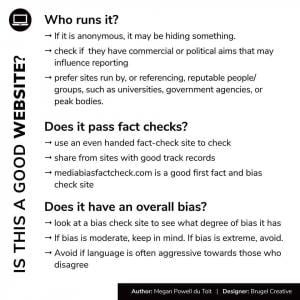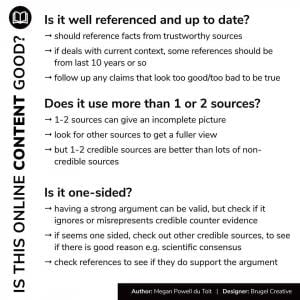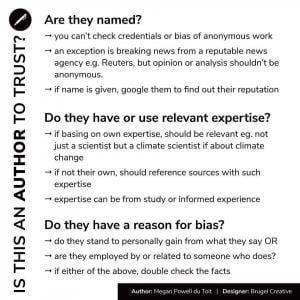-
Verify the date of the article.
Do not share old content as if it were recent. I have all the sympathy in the world for that missing teenager until I notice that the piece was published in 2015. That shocking statement from one politician about another? Make sure it’s recent, or it doesn’t count. When I connect your name to multiple careless and outdated posts, all of your posts lose credibility. Sure, we occasionally slip up. I’m talking patterns here.
-
Check the source of the article or meme.
-
- If no source can be found, don’t share it. Period. No matter how awesome it sounds. Look for the URL in the footer, then investigate that before posting.
- If the source is a website, dig a little. Find the “about” section on that website to learn about its purpose, methods, staff. Then peruse their main page for a while to get a sense of what kinds of content they produce. You should learn enough to know if they purport to be neutral or promote one end of the political spectrum or the other. Then decide if you wish to promote their agenda by sharing their content. Because that’s what happens on social media: your name is linked to the creator/source of the content you share.
- If the website is not well-known—a national or international newspaper or TV network—or does not offer a byline, be very cautious. Not all are partisan hacks, but most of them are. And if there is no name for the author, run! Avoid completely. Later, below, I will share which well-established sources I prefer. These downloadable images give an excellent bullet-point overview for fact-checking. Keep them handy and share freely! The attribution to their creators is on each image.




-












